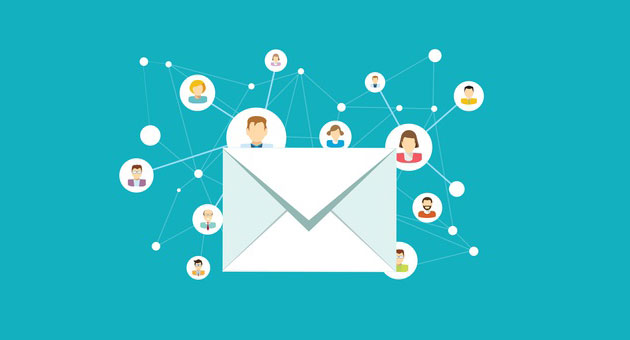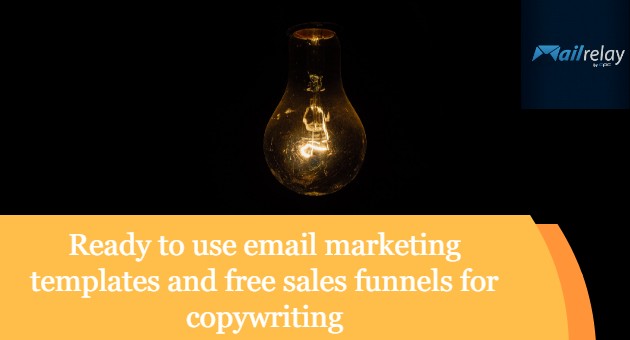
Selling by email is more effective if you send your sales campaigns at least once a week with a specific frequency.
If writing an email is something that is difficult for you, in this post, I will share copy templates ready to use and strategies for you to sell more so that you can have everything well prepared without wasting time.
This post is quite long, with several templates and many tips, but we will give you practical recommendations, so open your email marketing software in another tab, and get ready.
If you find it difficult to sell by email but understand the relevancy of that strategy (as is the case), here you have a good solution. If you dedicate a minimum of time to this post, you will see results, good results.
When you get to the end of the article, you will know how to create an effective sales funnel with the templates published here.
If you don’t have the time or experience to write amazing emails, I don’t think there is a better way to get sales and results than following the steps you are going to see in this article and use the ready-to-send templates.
Let’s get started
- 1 ◆ What are the most common problems when preparing an email marketing campaign?
- 2 ◆ Visualize your target customer, don’t, don’t prepare a buyer persona.
- 3 ◆ Understand the objections of your target customer
- 4 ◆ Prepare a sales funnel with the ready-made and free copywriting templates we have
- 4.1 ► Which is the Product with more clicks? Which is the one with fewer clicks?
- 4.2 ► Limited-selection sales campaigns
- 4.3 ► Direct template for closing more sales
- 4.4 ► Sales email template to address user concerns
- 4.5 ► Email template for summarizing the advantages of a product or service
- 4.6 ► Sales template for addressing a concrete concern
- 5 · When you are going to edit the texts of these email templates, think: What builds customer confidence?
- 6 · Summary of the funnel with the list of templates
- 6.1 1) First week, first template: sales template.
- 6.2 2) Second week: a limited selection sales campaign
- 6.3 3) Third week, second template: sales template with cheaper options
- 6.4 4) Fourth week, third template: removing objections and concerns
- 6.5 5) Fifth week, fourth template: summary of advantages
- 7 · How long should this funnel last?
◆ What are the most common problems when preparing an email marketing campaign?
Maybe it’s not your case, but many people struggle when writing sales emails.
Without turning every email into a simple commercial message with a link to the website. You can get much better results if you properly create your emails. You get more sales if you know what to include in each email.
The wrong message could affect your results; perhaps that is why many companies don’t send any newsletters, or only send a few campaigns per year because They are afraid of what subscribers would think or because they believe they will make a mistake.
What happens in these cases?
Many companies miss out on sales opportunities because They can’t keep in touch with customers, so they send very few campaigns because they don’t know what to write, or they create emails without really working on texts and images, which means they get very bad results.
To solve this problem, the first thing to keep in mind is:
If you have products or services to sell, the more attempts you make, the better.
It is pure statistics.
You can’t sell with the first email you send; in most situations, you have to work on it for a long time before you can convince a customer to buy the Product.
If you have to send a weekly campaign to sell, you should send a weekly newsletter.
If you know you usually sell more when you send two campaigns per month, that should be your strategy, send two campaigns. What’s the problem?
What’s the problem? If you have a product that your customers could buy, you have to “create” those moments of interest and interaction in which the customer will consider buying, and the more, the better.
You can’t sell without generating interactions and sales opportunities.
You simply can’t do that.
The sales process requires contact between a salesperson and a potential customer. If you don’t talk to your customers, they will forget your brand.
Yes, you could also wait and see if someone will visit your website. Some people think that it would work, they say things like: My customers know about my project, they will buy from me!
But that passive attitude leaves you waiting for what others do as a secondary actor. Something strange when you are the one who manages a business, and it is undoubtedly a terrible strategy because you will make less money.
So if you want to sell now, without waiting for them to act first, you should do something.
So you should create a newsletter to convince them to buy.
What can you lose?
Some contacts who weren’t going to buy from you anyway?
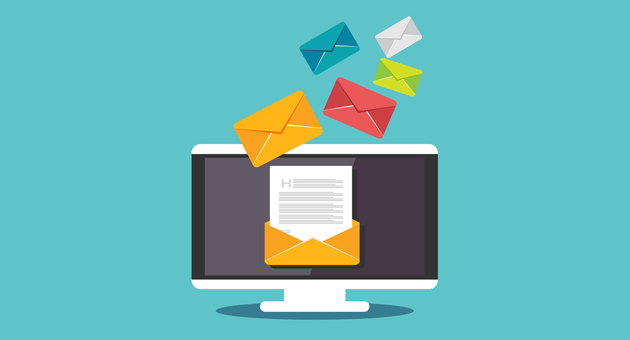
◆ Visualize your target customer, don’t, don’t prepare a buyer persona.
Below I’ll show you some effective email templates, but before I move on to the copywriting templates, which, after all, are templates, and you will have to adapt them, you have to do a little work, not too much.
At this point, I am not asking you to prepare what is known as a “buyer persona” or target customer, in the sense that you sit down and create a list with information such as:
- Age
- Gender
- Job
- Marital status
- Job/position
- Interests/hobbies
- Life goals
- Etc.
If you prepare a list with all these points, the results would be better because it would give you a better knowledge of the person you are addressing.
That’s for sure.
However, that is not what I am asking you to do now. Let’s assume that you already have that, or that you have been running your business for so long that you know your regular customer perfectly well, which is a common situation in business.
► What can help you at this moment
Is to imagine yourself in front of your target customer, as if you were in a store, in front of them.
As if they were talking to you in bidirectional communication, that is to say, that they respond to what you tell them.
Even if you have an online store or an online service, I’m sure that on more than one occasion you have talked to your customers.
So try to make it a general personification without any specific point, i.e., the idea of a fairly regular customer, without any extreme peculiarities, the kind of person who usually will buy from you.
Do you already have this target customer in mind?
► What do they need?
If you had your target customer in front of you, what do you think they would ask for?
And not only what but how, how would they ask you? Why would they ask you that?
For example, if your customers don’t use technical terms to order or buy your products, try to use the same phrases in your messages.
In any case, knowing what the customer needs is the minimum. When you sell a product, many customers will contact you to ask for help, so you should guide them, answer their questions, or solve their problems.
This brings us to the next point:
► Why do you think they need it?
Here we need to take the time to understand the primary motivation for the contact to accept your Product or service, so you should try to understand what is causing their problem, how it affects them, the reasons why they are interested in finding a solution.
This point is very important because, obviously, the email templates you will find below can’t solve it, as it depends exclusively on how well you know your customer. Therefore, you should adapt the templates to your needs.
Let me give you an example so that you can see how here at Mailrelay, we would deal with this situation. We know that our subscribers want to increase sales; that is their main need, and that email marketing is an excellent way to do it. So our email marketing software could help them with this problem, right?
Yes, that’s a reasonable approach.
But we can go further when we already know what our customers need and why they need it; you always, always have to ask yourself:
► How do you transfer the need to a personal level?
Every purchase has a personal aspect, always.
It is a reality that we often forget.
A manager who is looking for the best CRM may be looking for a way to have his work valued and promoted, for example.
If we return to the case of the previous example, a person who needs a sales tool, such as an email marketing service, has to sell; that is a fact.
All companies want to increase sales.
On a personal level, this user probably will be worried about the lack of sales in their company. They may be overwhelmed by the thought of what will happen if the situation doesn’t change and may even consider closing down or laying off employees.
These situations are unpleasant.
Don’t forget that there is always a personal motivation behind it. Discovering this reason will help you a lot when writing your e-mails or when adapting your newsletter templates.
Now that you have a person and their needs in mind, you have to think about the reason why they are not already buying from you.
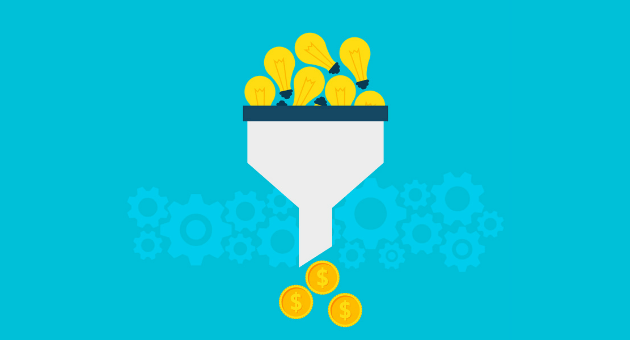
◆ Understand the objections of your target customer
Selling through email marketing campaigns is not so different from selling through any other medium, it is more or less the same, with the difference that we can’t:
During the usual buying process, we may encounter elements of objection to the purchase, which generally results in resistance to buying.
Objections and concerns
Are those “aspects” that make your target customer think that buying your Product is “worse” than doing nothing?
For instance, if you don’t offer the payment method they prefer, customers could think that they should look for another supplier, as it is too difficult to buy from you.
Some users will accept the payment methods and will buy, but other customers may decide to purchase from your competitors.
Other users could think your Product won’t solve their needs, or they already tested similar products and didn’t like the results.
We will have to address these concerns during the purchasing process.
On the other hand, we will have to respond to different objections, for example, in the commercial texts we create.
The work really starts here.
We should prepare a list of concerns and try to address them to the best of our ability.
You should use your website to talk about these aspects.
But you should also consider all their objections without forgetting to use your campaigns to discover what they think about your Product and the reasons why they are afraid of purchasing it.
And you can use copywriting to find this information, as well as to convince them to trust you.
► The usual objections
The problem is usually related to price, lack of time, and to think that the Product is useless.
And then, we will find derivations or variants of these aspects.
To give you an example of our case. Sometimes the client already has an email marketing service, and even though it doesn’t work very well or doesn’t include some key features they are afraid of changing to another email marketing platform, as they would have to set up DNS settings and learn how to use the new system.
Our job is to convince them otherwise.
To better understand all these objections, we will try to draw conclusions from each campaign we send.
By studying statistics, clicks, etc.
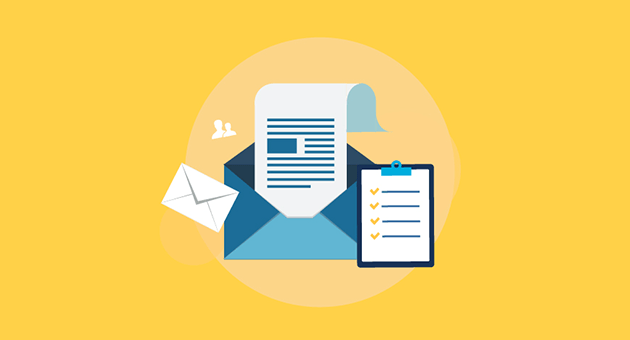
◆ Prepare a sales funnel with the ready-made and free copywriting templates we have
Prepare a sales funnel with the ready-made and free copywriting templates we have
We are going to start with a very generic email template; it will be the first one of our funnel, and as we still don’t have statistical data, it will be important that you keep in mind the target customer that we saw before.
Well, here it is:
First sales template
The last 3 times you thought about [ name the problem ], did you think it would be better to forget about it instead of solving it?
If forgetting about it or not trying to solve it is not possible, or it may be worse, wouldn’t it be better to do something about it? Are you still concerned about [ describe the concern (e.g., difficulty, lack of means, technical knowledge, installation) ]?
That is normal; we receive many questions about the same issues, because in the end, what you don’t want is to lose [ time, money, security, reliability ] if the solution is not clear.
We have thought about that a lot, and we have come up with a solution, which doesn’t work for everybody, but that will solve the problem we know you are facing.
This is [the solution to the problem thanks to the Product or service ], and it works very well for [ this problem ] because it’s targeted at [ advantage related to the customer’s problem ] thanks to [ what makes your Product different from other alternatives ].
Visit the website now, where you can see all the details, including how thanks to [ the Product], you can get [ reward that the customer receives (achievement, autonomy, security, self-esteem); it must be something personal]. Click here to access the website.
Do you have any doubts? Surely it’s something we’ve been asked before, call us at [ phone ], and we will solve any question immediately.
If you really want to solve [ the problem ], click on the link above.
This template, edited to your needs, can be a starting point for your email marketing campaign or funnel.
Make no mistake; it is a generic template; the more you adapt, the better. It will save you time, but the more work you put into it, the better the results will be.
In this template, you can insert several products, but not too many, although it would be interesting to have more than one option, to know a little about the objections, you will have to face.
And the interests of your customers. For example, you can then study the statistics of your campaigns:
► Which is the Product with more clicks? Which is the one with fewer clicks?
Here we will have to do some research and see the differences of our products to determine what is more relevant to our target customers.
Factors like price, features, brand, ETC.
When you think you have it more or less clear, maybe you can try with a different message
► Limited-selection sales campaigns
When we offer too many alternatives, our subscribers will have too many options, which would generate indecision.
Because they don’t know which one will be the best in their case, or They don’t want to spend time evaluating all the options.
In this case, you could propose a variant of the previous email with fewer options.
Or, if you are already sending a sales email with a single product, you can reduce the advantages you mention, focusing their attention on those that you perceive as the main ones for your customers.
If we include too many advantages, they may not read them all.
► Direct template for closing more sales
If you think that the problem is why your customers don’t buy is the price, you don’t want to use discounts at the moment.
Or you sense that the problem is that some of your leads, at least some of them, are not really sure about buying your Product.
In this case, you could think about using a cheaper product. You wouldn’t be offering a discount, but if they don’t have to spend a lot of money, some customers will accept the risk, and you can take advantage to get more information about their concerns. (their objections).
And that is what the following email marketing template offers.
Here is an example of such a template
“[Add rating/opinion from another customer. Include one or two lines; the more natural the language used, the better. Keep quotation marks ].”
This is a genuine opinion of a person who has tried our [ product or service ] unhurriedly, at ease, and when they saw that everything was as expected, they wrote to us, sharing their opinion and thanking us.
I want you to try [ the Product or service ] so that you can verify that [ the Product or service ] is [ the best alternative, option, way of solving the problem ].
I have given a lot of thought to [ your specific case, your specific need ] and the [risk involved / loss of opportunity / what the customer is feeling ]
[ The product / offer / service ] that I am sure you will [ like /will work ] is: [ Include a product with a lower price than the last offer you sent. Don’t offer any discount; just make sure the price is significantly lower ][ product price $]
[Description of the Product focused on the problem it solves ].
There is no better way to know [ if you like something / it helps you with your problem ] than to try it.
Now you can [ solve the problem / take advantage of the Product] without risk or [ major concern: spending a lot of money / investing a lot of time/risk X ]
Above, you have the link to the Product on a website with all the details and a simple purchasing process.
If you have any questions, just call us at [ phone ].
[Time and delivery options]
To create this campaign, we should understand why customers are not buying and offer a safer alternative.
We will take advantage of this to learn as much as possible, contacting potential buyers, or talk to customers if they call to ask questions.
Get feedback from sales as well.
Try to create a small survey that you can send after the sale where in addition to their satisfaction level, you can inquire about their doubts before buying the Product.
Also, apart from the funnel, we are dealing with here, you can send an email marketing campaign with a survey to try to find out this information.
► Sales email template to address user concerns
If you are very clear about what your customer’s objection is, you can try to give a direct answer to their concerns.
This objection is different because we discussed the price in a previous email.
You should try to show that the objection doesn’t exist or doesn’t really impact the customer’s beliefs.
You could also explain why your Product is better than the other alternatives available.
As in the following example
Do you know what surprises our customers the most about [ the Product or service ]?
[The main advantage of the Product + most annoying and common concern/problem of using products from the main competitors ].
[Other secondary advantage valued by customers ].
The surprise comes from the comparison with [ competitor’s products ].
For example, in our case.
[Product # price]
[Product features that lead to an advantage over the competition ]
All this results in [ benefit the customer got from the previous advantage and solving the main concern ].
In the link above, you can buy it, and [ incentive for buying it ]
The better you know your customer, the better you can write this email, and the more accurate you will be in addressing your customer’s objections.
And the easier it will be for you to reduce their concerns.
If we have more than one objection, we will send several campaigns, responding to each one of them, and we will try to draw conclusions to determine which may be the most important facts.
It may take time, but email by email, you will get more information.
► Email template for summarizing the advantages of a product or service
Sometimes our sales messages should focus on conveying the advantages of our Product or service.
To put it in value.
For example, we could have this template:
[Anecdote related to a problem or usual customer’s query. It is better to include a funny anecdote to grab the attention of your subscribers at once ]
[ Include a possible generic solution. If it is not the best option (perhaps it would be better not to address it) ]
[ Tip 1 ]
[ Tip 2 ]
[ Tip 3 ]
[Show the problems of the current solution used by the customer or the risks of not solving the problem ]
[ Problem 1 ]
[ Problem 2 ]
[Now the best solution, our Product, and the reason why it is the best solution ]
[ Product 1 ]
[ Price $ ]
[ Short Description]
[ Product 2 # if possible with a different price ] [ Price $ ]
[ Short Description]
[ Now we expose the benefits of our Product over the usual solution ]:
[ Advantage 1 ]
[ Advantage 2 ]
[ Advantage 3 ]
[Develop a mental picture of how the customer can use or take advantage of the Product]
This email is based on providing the contact with a bit of entertainment and usefulness so that they will follow us to the end of the funnel. This way, we have the opportunity to get more information and convince the subscriber that they should buy it.
► Sales template for addressing a concrete concern
When you detect a major objection or a problem that is preventing the sale, you can try to find the best way to reassure your leads.
So far we have tried to offer lower priced products or different products.
Showing a few advantages.
Now we’ll do it again, but with a different approach; we will talk about the problem directly and explain that we have a solution.
For example, if the problem is the price, try to make a lower-risk offer or a package that encourages the purchase.
Example of this type of template
Have you ever wanted to test our products and so far
[ include the reason why you believe it has prevented them from buying the Product, such as price ]?
We don’t offer discounts very often as it is difficult to reduce the prices of high-quality products.
Even so, we have looked for a way for you to [ take advantage of the solution we found without the main concern ] :
[Product with a lower price ] [ Price $ ]
[ Product detail and a brief explanation of why the price is lower #for example, because there is less quantity of products or the customer will have less time to take advantage of the deal ]
[Product with some kind of offer, such as a pack that includes a trial of another product, maybe even the previous smaller Product included ]
[ Price $ ]
You could pass up this offer if you don’t [ want to solve the issue, or don’t want to take advantage of this deal, etc.] we won’t offer you another deal like this one for a long time.
You will continue to find our products at their usual price on our website.
It is a fair price, but not as good as today’s promo.
This could be one of the final emails in your funnel series.
If you want, you could add one more with a discount, or try to go back to the beginning of the funnel, but change a few things.
What will foster customer confidence? Writing an email is easier from this perspective.

· When you are going to edit the texts of these email templates, think: What builds customer confidence?
Do you know what kind of people, when you talk to them, transmit confidence?
Those who are not too far from your own ideas, experiences, and values. People who agree with you or confirm your ideas.
People feel better in groups of like-minded people; that’s what we should try to emulate in our email marketing campaigns.
It’s no theory of mine, and it’s easy to prove.
Think of a movie you like, a book, series, a singer, whatever. That you really, really like.
Now think of a stranger at a party, meeting, event, etc.
You introduce yourself, and to break the ice, you comment: have you seen/read/listened to X?
Now two things could happen:
“Yes, I love it, especially the scene where …”
“Ufff, no, I can’t stand that kind of cinema, I find it very boring… “
Well, in the first case, the conversation will likely continue to flow, and you will have a nice time with that person, who you don’t dislike for a start.
In the second case, well…
Most likely, when they say that the movie is boring, we will take it a bit personally, because it is something we love, and we can’t understand how another person would not feel the same.
Things probably won’t work.
We’ve already got off on the wrong foot.
When we really like something or believe our opinion is correct, we don’t like to be contradicted.
That is normal; we can’t analyze everything all the time.
Let’s get down to business.
► How can we gain the trust of our contacts?
First of all, by doing well what we saw at the beginning of the post.
You have to think of that person, their business problems, their doubts, fears, hopes, as if they were a personal friend from long ago (the kind of friend who helps you keep your business afloat, the one who buys your products, the one who someone who matters to you).
Of course, when you detect an objection or concern, give it the value it deserves.
Don’t think it is unimportant, for example:
- They don’t need to pay by PayPal if we already have several credit cards.
I don’t know how often I have left the purchase half done because the shop didn’t offer the payment method I wanted to use.
You may think that it is worse for me not to buy what I wanted.
It was a mistake because I did end up buying the Product. But somewhere else.
The one who lost the sale was the merchant waiting for me to adapt instead of the one who could adapt to my needs.
You should not downplay the objections without having studied all of them.
If there is no solution, there is no solution.
► No debes quitar importancia a las objeciones sin haberlas estudiado bien
Of course, objections must be addressed in your sales copywriting templates.
For example, through anecdotes that have happened to you with Other customers, stories related to the objection can attract their attention and interest.
The advantages summary template we prepared above could be useful for you.
Try to humanize your emails and write your message as if you had the customer in front of you.
Imagine an interested customer but with the usual concerns and complaints:
- Price
- Not knowing if it will work
- Lack of time
From there, try to refute the arguments as if they were telling you as if you had them in front of you. What would you say to boost their confidence?
For creating email marketing campaigns, you have to do just that, but you just have to “sense” a part of the conversation to try to guess what your customer would say.
Write a weekly email, plan it, and you will sell more.
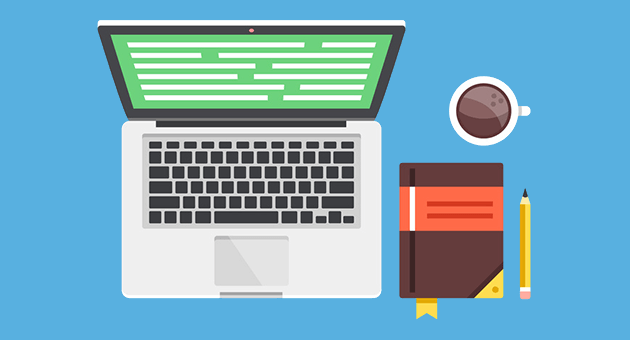
· Summary of the funnel with the list of templates
We have seen so far a good number of templates that I summarize here:
1) First week, first template: sales template.
In this first email, we expose the customer’s problem and show them a possible solution in the form of one or more of our products.
If you include a couple of products or more (always related to the same problem or need), it will allow you to better understand your target customers and what drives them or their concerns.
In case you only have one product or service, try to include only some of the advantages (linked to your website so that you can measure the CTR), and you can vary the benefits in successive emails.
2) Second week: a limited selection sales campaign
If you included more than 1 product, try again now, but with fewer.
Two or even one, similar to the one that was most popular the previous week.
Even if they were profitable, try reducing them or focusing on just one.
In this second newsletter, we will continue to understand the customer’s needs better.
In order to create more relevant messages in the future.
3) Third week, second template: sales template with cheaper options
Often the problem is the price, even if there are more things underneath (they don’t trust it, they don’t think it will work). So it is worth trying to discover if that is the problem as soon as possible. So you could send a newsletter with a cheaper product.
You don’t need to send a discount yet; it would be more interesting towards the end of the series.
But you can do it if you have no other way than to reduce the price.
4) Fourth week, third template: removing objections and concerns
Sometimes the problem is not the price, so you should also answer other doubts.
For instance, when a customer is not sure about the advantages or has Other questions.
Imagine that you sell sneakers with a new cushioning system, but the customer has doubts because they all seem to be the same, or they could think that this new system has not been tested, so they are distrustful.
In that case, you can compare your Product with the alternatives in the market. You should highlight the advantage of your Product over the other ones.
5) Fifth week, fourth template: summary of advantages
Sometimes what we need is to remind the customer of all the advantages of our Product or service.
And contrast them with not solving the problem or using an alternative solution.
If we see that this doesn’t solve the problem, we should move on to the last attempt.
· How long should this funnel last?
I think it would be better to send a daily email, or at most, every other day.
If you’re really worried about it, try sending a weekly email. I think that you could find some problems with that strategy because there is a lot of time in between, and it is possible that the customer would end up buying the product before the end of the funnel.
Create your free Mailrelay account; there, you already have the templates that we have seen uploaded.
It couldn’t be easier to sell by email with these resources.
Take this advantage to send a newsletter today.
